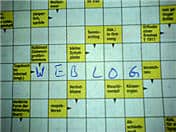Better than SEO: More Turnover with Google AdWords
.jpg) In 2009, many more shop operators are attending to the marketing of their offering using Google AdWords. The activation of Google AdWords is a form of keyword optimisation that, in contrast to search engine optimisation, isn’t free but facilitates significantly higher click rates and targeted traffic. Read about the basics of activating AdWords and how its effect can be measured on the shopping basket.
In 2009, many more shop operators are attending to the marketing of their offering using Google AdWords. The activation of Google AdWords is a form of keyword optimisation that, in contrast to search engine optimisation, isn’t free but facilitates significantly higher click rates and targeted traffic. Read about the basics of activating AdWords and how its effect can be measured on the shopping basket.
What Are AdWords?
Google AdWords are short advertisements that aren’t free and activated at Google for specific search terms and inserted at prominent positions in the organic index. The advertisements either appear on the right side of the page or directly above the organic results and are discreetly labelled as "Sponsored links".
"Pay per Click" is the principle according to which the AdWords campaign is calculated. You select a certain number of keywords for a campaign and determine the price that you are willing to pay for it. The minimum offer per keyword amounts just a few pence. The more popular a keyword is and the higher up you want it to be displayed in the index, the more expensive it is. A keyword is less expensive if the associated landing page (see below) is appraised by Google as very relevant.
Advantage of AdWords
Since AdWords are displayed at the very top in search results, they are clicked on relatively often. In the individual case, the estimation of AdWords frequently has a much higher degree of effect than a good ranking in the organic index.
Implementing AdWords Campaigns
To start a Google AdWords campaign, you’ll need to have a Google AdWords account. When you set up your account, you need to directly specify the keywords, the advertising text as well as the maximum amount that you would like to spend for the campaign. If you have not yet completely defined the content, you can, at any time, edit the information you entered at the beginning.
The Right Keywords for the AdWords Campaign
With any form of search engine optimisation, the right keywords are always the highest priority. It is essential not to use keywords that are too general or too specific for an AdWords campaign.
Problem with general keywords (e.g. "Online shop"):
- Strong competition
- Expensive keyword
- Lots of traffic but small conversion rate
Problem with specific keywords (e.g. "aluminium spinner"):
- Kewords seldom searched for but high conversion rate
- Campaigns with a clickrate <0.5 % (percentage of search requests generated per keyword and month) are deactivated by Google.
The keyword tool from Google AdWords is recommended for searching for the correct keywords. This tool can show you, at light-speed, how often or seldom certain terms and phrases are searched for and how high the competition is for them.
Always create a pool of keywords that is neither too general nor too specific and which generates good or targeted traffic. Then select those that are matched for your campaign. In the beginning, you should start with just a few keywords and test these in different advertising versions.
Creating an advertisement
Often, the favoured advertising texts are not those that are clicked on most frequently. Here, a few notes on designing headings, advertising texts and URLs:
Headings:
Headings must grab the attention of the user, speak to the right target group and create interest for the product or service. Use one or multiple selected keywords already in the heading. Keep the total number of keywords per advertisement low. Use only keywords that also appear in the heading of the advertisement.
Advertising text:
Describe what you are offering in a short, precise, and pleasing way. It won’t do you any good to attract visitors to your website using wilful misrepresentation. If the user doesn’t find what you have advertised, the user will immediately leave your website again.
Try out different text versions. With limited space available, it is unrealistic to get the most effective text at first go. Always integrate several keywords in the description.
Attention! Google has strict rules. Many special characters such as ">" or "+" are forbidden. Carrying over of text into a URL is also not allowed, e.g. "You can find tips on the … www.epages.com/en/blog". Also, do not use multiple punctuation marks such as "???" or "…". Google will not tolerate any of these little wording tricks. However, if you do use these, it will lead to the deactivation of your advertisement.
URL:
The URL is one of the most important elements of every advertisement with Google. The user will only click on your ad when the Internet address is a logical continuation of your ad. All the ads tested by us received 50% higher click rates with the URL "www.epages.com/de/blog" than with the normal address "epages.com/de/blog". Therefore, be absolutely sure to test different domains and URLs.
Additional information:
- Mention keywords and central product advantages already in the heading
- Phrase sales promises which differentiate from the competition in a positive way (no exaggeration or untrustworthy promises such as "80% cheaper")
- Be short and succinct: Represent sales promises concisely and clearly
- The URL of the target page should contain the company name and keyword
Where to Link to?
The start page is not always the ideal place to link to from your AdWords campaign since it is often too general. For optimising the conversion rate, use pages that pick up the visitors exactly from where they entered when they clicked on the adword link. In order to directly locate the advertised products, so-called landing pages that are matched exactly to the product are best suited.
If you are offering skiwear for men at half price, interested parties should be taken directly to a page with mens’ skiwear for 50% off when they click on the advertising text. The best way is to tie in the keyword again so that users know they are in the correct place. The landing page should be completely free of content that could distract the user from the offer (e.g. web banners).
Observing Success Daily
If an AdWords campaign was activated, it should be checked on a daily basis: How many users get to your site this way? How high is the conversion rate (i.e. how many users send off their shopping baskets)? In this way, you can directly intervene in your campaign, test versions and gather experience.
Data Overview
If you have set up a Google AdWords account, you can display all relevant information for all keywords under "Campaign summary", such as the current status of the activated ad, the current offer, the previous number of clicks, the impressions (how often an ad was displayed in the search results of Google), the CTR (Click-Through Rate -> how many users who saw the ad actually clicked on the link?), the CPC (Cost Per Click), the total costs and the average position in the search results.
Measuring Conversion Rates
In addition, you can measure the conversion rates of your advertisements very easily by embedding a tracking code in the shopping basket of your shop. In the upper menu of the Google Adword account, you will find a "Conversion tracking" link. Here, you will receive a tracking code by creating an arbitrary named action (the volume for creating the action is optional). The generated code is subsequently embedded in your shopping basket of the confirmation page (or in other places, where other activities are offered, e.g. newsletter registration). In the administration section of the ePages shop software, go to Settings -> Basket settings -> Texts -> Text for confirmation page and integrate the tracking code in the HTML editor.
In the "Conversion tracking" item of the Google AdWords campaign administration, you will subsequently see how many customers have come to your shop via Google AdWords campaigns and actually placed an order.
Observing Privacy Policy
When embedding the tracking code, ensure that you explain to your customers about the storage of their information. You have the option of influencing how the tracking looks just before creating the code. The display should ideally appear directly under the text of the order confirmation.
Lorem ipsum dolor sit amet, consetetur sadipscing elitr, sed diam nonumy eirmod tempor invidunt ut labore et dolore magna aliquyam erat, sed diam voluptua.



Leave a Reply
Want to join the discussion?Feel free to contribute!